
Developer: Area 35
Publisher: Unties
Platform: PC, PS4, Switch, Xbox One
Tested on: PS4
Tiny Metal – Review
Tiny Metal is a Turn-based Tactical game developed by Japanese developer Area 35 and published by Unties. It is inspired by Advance Wars, a similar game released in 2001. In this military themed game, your goal is to destroy enemy forces by capturing buildings, creating a variety of units, each with their own strengths and weaknesses and using them tactically to overpower your opponent. This game is available on PS4, Nintendo Switch and PC.
Story
In Tiny Metal’s main campaign, you follow Lieutenant Nathan Gries, a young officer of the Artemisian Army. After the assassination of Artemisia’s King, it is up to Lieutenant Gries and his fellow officers to defend the country against the Zipanese invasion. Along the way, you meet new characters, all joining up to battle Zipang. Each character has its own backstory and reason to join the fight against the invaders. You also encounter fierce and unique enemies, such as Orzio, a mysterieus arms dealer who wears a clown costume to hide the scars from earlier battles. You travel across the land of Artemisia, battle to battle, all the way to the mastermind responsible for the invasion, and the assassination of your king that proceeded it. After the first few tutorial battles, the challenge and your tactical options grow, with new units and commands at your disposal. There are a total of fourteen missions in the main campaign, plus five secret missions, good for a total of ten to fourteen hours of gameplay.
Unfortunately, although Tiny Metal’s story tries to be intriguing, the execution isn’t very effective. Conversations between characters take too long and sometimes the text boxes follow each other up way too fast, never giving you enough time to process the plot. This leads to the cutscenes between battles becoming rather tedious and although you might be interested in Tiny Metal’s plot initially, you will find yourself using the handy fast forward button a bit too much, just to move things along.
Graphics
The graphics in Tiny Metal are decent. Each map contains a collection of tiles, making out roads, buildings, forests and hills. Although the layout of each mission is a bit different, the design is always the same and very simple at that. The units all look distinctively different, from infantry units to different types of tanks or helicopters. The design is simple and adorably childish, but very appealing and effective. When attacking, the game switches from a top view to a short cutscene on the ground for attack animations. Armies are controlled by unique anime characters, which are nicely illustrated as opposed to the simple graphics in the rest of the game.
Sound
The sound in this game is nothing extraordinary. The music is an orchestral army-styled theme and the battle music, which is the music you will be listening to the most, is a bouncy upbeat tune. The music in the multiplayer screen may contain the best soundtrack with its high-tempo drum and bass type theme. Because the dialogue comes in the form of reading text boxes, the voice acting is limited to the exclamations of units when dealing or receiving damage. Each type of unit has its own particular voice, accent and way of speaking.
Gameplay
Tiny Metal is a Turn-based Strategy game where you and your opponent(s) fight each other by each taking turns building and moving units in on each other. On your turn you can move your units a couple of tiles further, doing so will uncover more of the map that is shrouded in a fog of war. You can build more units if you have the money, you can try to capture buildings to gain more resources, or you can try to press an attack. When you’ve moved a unit next to an enemy unit, you can choose one of the following actions; Attack, which is a calculated offensive attack against the enemy; or Assault, which does little damage but pushes an enemy unit away from a tile it’s occupying; or you can lock-on to a unit, and when multiple units lock on to that unit, you can use Focus Fire, making all the locked-on units attack the enemy unit simultaneously, limiting the enemy unit in its counterattack.
There are several types of buildings. Cities have you gain more resources, while owning a factory lets you create more units. Other unique buildings, such as an airport, lets you create aerial units. Additionally, there are vantage points you can use, such as a mountain top, where your line of sight is increased and the enemy has a harder time battling you. There is also a great variety of units you can build, with each its use, strength and weakness. A few examples are: The Rifleman, the cheapest unit, is good for capturing buildings, but are very vulnerable. The Lancer unit, armed with bazookas, are great for armored units, but aren’t well suited for capturing any of the buildings and Scout units are vehicles with a wide line of sight, great for exploring and dealing with Rifleman units, but aren’t very strong. There are a total of twelve types of playable units in the game, plus unique hero units that you unlock in the main campaign.
Although the Main Campaign offers more than ten hours of content, there are additional modes you can play in Tiny Metal. Skirmish mode offers over 50 single battles, rated from fun to expert level, battling one or more enemies on very different types of playing fields. These skirmishes can be very challenging, opposed to the less difficult main campaign. For those who like to test their tactical skills online, there is a Multiplayer mode where you battle one or more online adversaries in a variety of maps.
The game runs smoothly, with hardly any bugs, but unfortunately, a tactical game where you have to fight a CPU, it is crucial that it has decent AI and here is where we can see one of Tiny Metal’s flaws. The AI isn’t very good and when you figure out how the AI works, it can be easily abused. Missions sometimes take way too long, where you see that you are clearly ahead and going to be victorious, but finishing the last bit of enemies takes another ten to fifteen tedious minutes of cleanup.
Conclusion
Tiny Metal is fun tactical game with many hours of content. Because the main story takes too long and becomes tedious very quickly, it is ultimately considered almost lackluster. The most fun is to be had in the Skirmish mode and battling in the Multiplayer with friends. The game looks appealing and runs smoothly, but the AI isn’t very impressive. There is a great variety of units and tactical options, but the game never really gets you on the edge of your seat. You often start a mission with an enormous opposition, but after a long grind, you end up with an enormous army and your victory feels dragged out and unfulfilling. The game is perfect for a mission or two once in a while, but lacks invasive enough gameplay to really take a grip on you for many hours. A good looking game, with potential, but ultimately shaky execution.
Tiny Metal - Review,1 Comment
Leave a Reply
You must be logged in to post a comment.

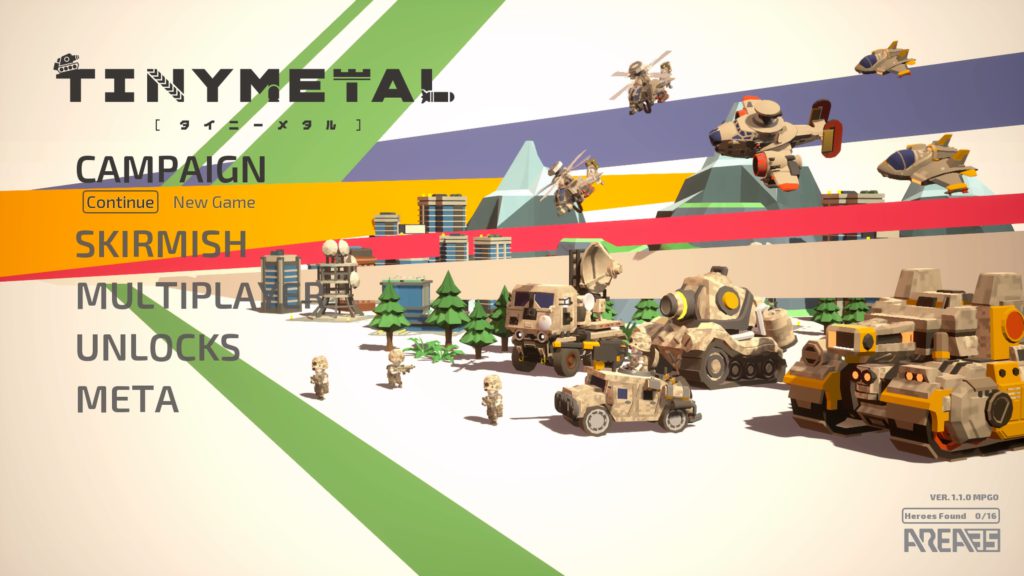

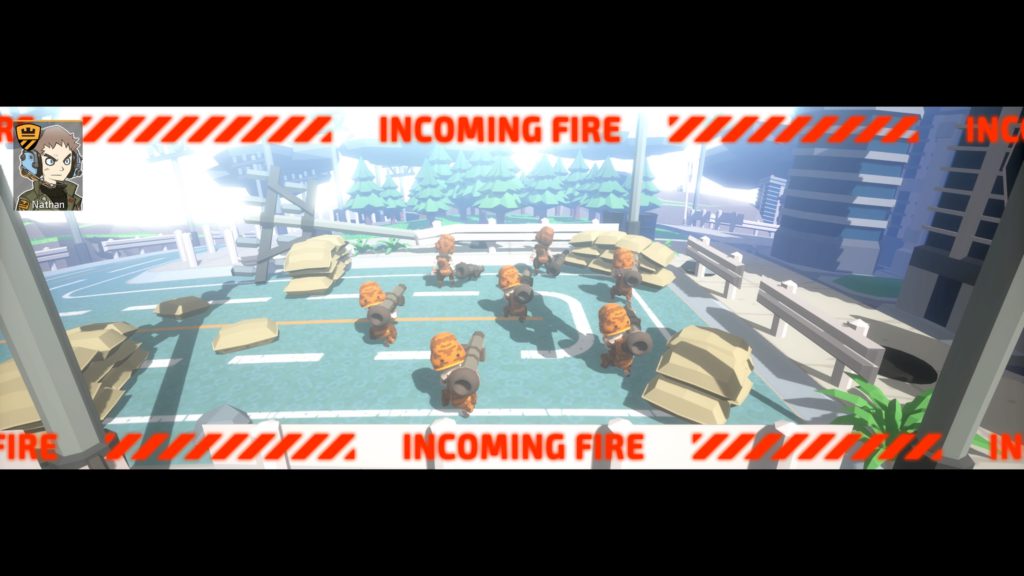
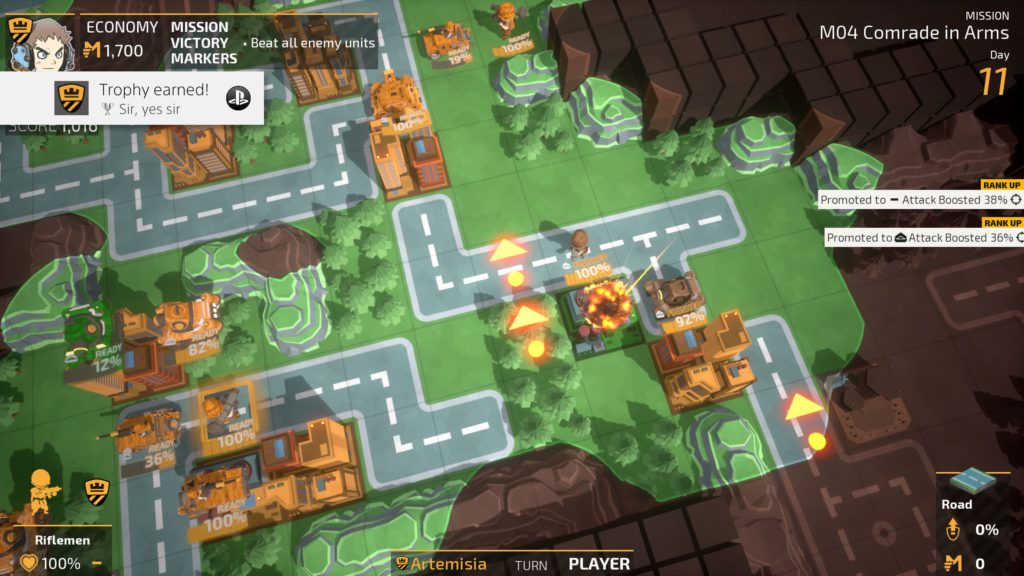
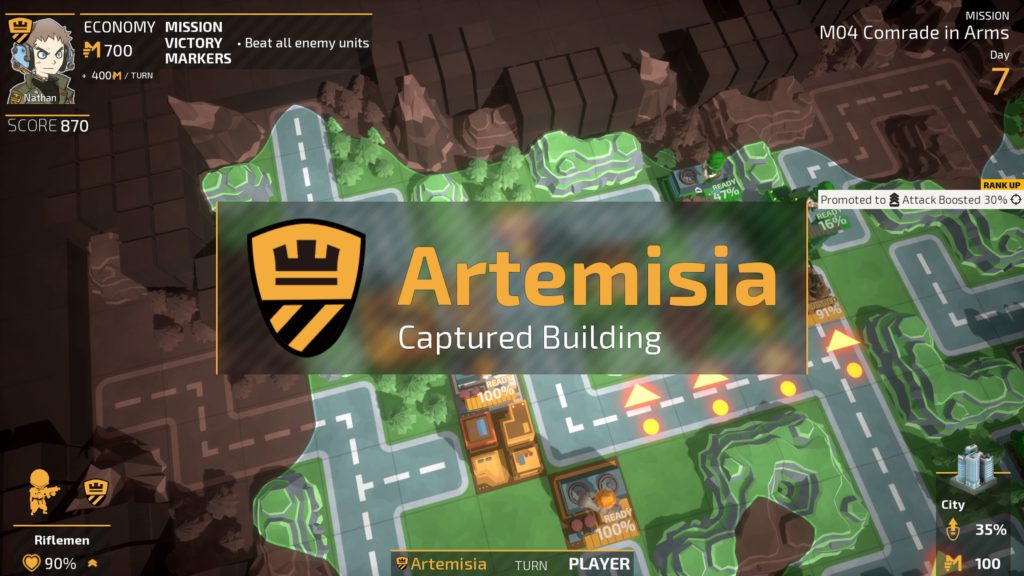
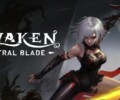



[…] AREA 35, Inc. is excited to announce the release of Tiny Metal: Full Metal Rumble on Nintendo Switch and PC today. The game can be seen as a spiritual successor to Advance Wars and a direct standalone sequel to Tiny Metal in 2017. If you’re not familiar with Advance Wars, it’s a turn-based strategy title initially released on the Game Boy Advance in 2001. A long-time has passed since then and the game now takes advantage of all that modern-day systems have to offer. Nevertheless, the style is still very recognizable. The story will pick up after Tiny Metal and reveal the fates of Commander Wolfram, Nathan Gries, and the rest of the cast of the original game. You can find our review of the original game right here. […]